Do-it-yourself irrigation systems in the country
No garden or vegetable garden is complete without a well-thought-out irrigation system. The larger the area planted, the more difficult and powerful it must be in order to provide all plants with sufficient water.
Content:
- Irrigation types
- DIY drip irrigation system
- Automatic watering in the country
- Do-it-yourself sprinkler irrigation system
- The main rules of watering
Irrigation types
Do-it-yourself irrigation systems in the country are a lot of money saving. With the correct distribution of water, it is possible to save on the amount of water used.
There are three main types of watering:
- Rain. Rain-type irrigation means that the water comes from the top. It irrigates plant leaves, washes away dust from them, without eroding the soil. This type is most effective, as it is as close as possible to natural watering.
- Drip. Drip irrigation is the most economical. Water is not wasted on the surface of the plant or on nearby soil that does not touch the roots. Water moistens the soil in the right place just as much as needed. If you have a large garden area and a limited amount of water, this type of watering is for you.
- Intrasoil. Intrasoil irrigation means that the soil is saturated with moisture, provided that its upper layer remains dry. That is, the water comes from the inside. Such watering protects the stems and leaves of plants from decay, prevents the growth of weeds.
Watering can be automatic or mechanical. With automatic watering, you do not need to monitor the amount of water, the frequency of watering. Everything is adjusted and carefully monitored by the automation. Such an installation serves a very long time, more than 10 years, however, to install it, it will take a lot of money. The irrigation system can be semi-automatic. For example, you can set a timer that will start watering at the right time.
You can also use the most common irrigation method - in furrows or holes.
A certain amount of water is poured into special furrows between the beds or into holes under the roots of plants. When the furrow or hole is filled with water, move on to the next. This is a way for small areas and people with enough time to wait for the water to fill the furrow. This is not the most economical way in terms of water consumption, but you will not have to spend money on an expensive irrigation system and automation.
DIY drip irrigation system
The essence of this system lies in the fact that a storage tank of sufficient volume supplies water under a certain pressure to the pipes. The pipes, in turn, have droppers located in the immediate vicinity of the root system.
The difficulty is that good water pressure reaches only the nearest droppers, while the more distant ones suffer from a lack of water.
If the pressure is increased, it turns out that the first droppers deliver more water than the last, which can lead to root rot. Therefore, it is very important to think over the pressure distribution system for all droppers evenly.
So, if you decide to install a drip irrigation system, you will need the following components:
- The pipes themselves. A special pipeline system and distribution pipes will be needed. Usually pipes made of metal-plastic are chosen.
- Valves. Valves are needed to regulate the water supply.When the water limit is exceeded, the valve prevents further flow.
- Counter. A counter is needed to know exactly the amount of water used. Without it, it will be difficult to determine if enough water is flowing to the plants and if there is a failure in the system.
- Filters. There are many types of water filters. You can choose the filter yourself depending on the quality of the supplied water. If the water is heavily contaminated, choose filters with automatic flushing so as not to waste time cleaning them.
- Droppers. Through droppers, water is supplied to each plant. Accordingly, the number of droppers usually coincides with the number of seedlings.
- Fertilizer unit. You can install a special unit separate from the water tank, into which you will apply fertilizer (granular or liquid). This fertilizer will mix with the water in the pipes and be evenly delivered to the plant through the dropper.
- Plugs and connectors. They will be needed at the branching points of the pipes.
To properly organize such a watering system, draw a diagram of your site, depicting beds on it with each individual plant. This will help you calculate how many droppers and connectors you will need.
Automatic watering in the country
Automation is a complex design. It makes life easier for the gardener, but it is not so easy to automate watering yourself. Automatic elements of the system include pumps, water pressure control devices, timers, control unit, etc. Often gardeners prefer to entrust this work to professionals. If you nevertheless decide to do it yourself, at least consult with a specialist.
Tips for installing autowatering:
- It would be nice to install additional soil moisture sensors. The irrigation system timer will operate regardless of natural precipitation. To prevent waterlogging, it is necessary to control the level of soil moisture.
- Any irrigation system installation requires a plan. Sketch a plan of your site, mark on it schematically where the sprayers or droppers will be located. Do not forget about paths, buildings and other installations on the site.
- After the plot diagram is ready, you can make the markup according to the plan. Colored cords and pegs will come off for marking.
- To provide the system with water, you must purchase a pump. Pumps can be drainage, axial, piston. Choose a pump based on the amount of water you need to irrigate your area. For automatic irrigation of large volumes, an axial pump is perfect. For small areas, it is better to choose a rotary pumping unit.
- Through the pump, water will flow into the pipes from a special container. It is desirable that this container has a special coating inside that prevents water bloom. The presence of elements of decay in water is undesirable for plants.
The pump power determines the pressure in the irrigation system. You can start the system yourself or using a remote control.
With full automation, the equipment works independently when the humidity sensor shows a mark below the specified value.
If you've opted for full automation, don't worry about watering. The system will do almost everything for you. However, you should still periodically check and change the filters, and change the batteries once a season. It is better to remove the batteries for the winter.
Do-it-yourself sprinkler irrigation system
Sprinkler irrigation is often used to water lawns, but this method will also be very convenient in gardens and vegetable gardens. If the system is automatic, a balance must be struck between irrigation frequency and moisture absorption. Rainwater irrigation is good because it does not disturb the soil cover. Strong jets of water do not leave unnecessary grooves and holes, do not injure the roots.
The most important part of irrigation is to control the pressure and intensity of the jets so as not to cause waterlogging of the soil.
To install a rainwater irrigation system, you need to lay pipes and distribute irrigation installations so that the entire area is irrigated evenly. If trees and shrubs need to be watered, sprinklers should be attached higher. The main elements of such a system are pipes (with a diameter of about 20 mm), taps and the nozzles themselves with nozzles. Irrigation should be uniform. If the jet is not sprayed, but beats in one place, this will lead to decay of the plant roots.
With a properly selected nozzle, you will not need a lot of pressure to water the entire area. The water will be distributed in small portions in the right amount, without leaving dents in the soil.
The Snail type rain system is quite common:
- It is easy to make it yourself from plastic.
- The essence of this system is that water enters a special pipe located at some distance from the ground.
- Once there, the water is sprayed in the form of an umbrella.
- This sprinkler is capable of covering a large area.
- It must be transferred from one place to another until the entire crop is watered.
- This option is suitable for small areas.
An even simpler option for sprinkling is "Ring":
- An ordinary rubber hose is rolled up into a ring of the required diameter.
- At some distance from each other, small holes are made in the hose through which spraying will take place.
- By adjusting the pressure in the hose, you can increase or decrease the jets.
There is some complexity of such a system: in a strong wind, the uniformity of irrigation is disturbed. The surface of the site should be as flat as possible. Otherwise, the water will drain under the slope, forming puddles.
The main rules of watering
For watering to be effective, you must follow some rules:
- No matter how automated the irrigation system is, you will not be able to completely distance yourself from this process. Watering without loosening will not be effective. A crust forms on the surface of the soil, which does not allow moisture to penetrate inside. It must be loosened up. So the soil is saturated with oxygen and moisture.
- Cold water for irrigation is undesirable. Water that has settled in the sun is best suited for irrigation. The cold will negatively affect the root system.
- Try to distribute the plants over the area so that you can divide it into zones according to the required degree of humidity. Moisture-loving plants are in one side, and lovers of low humidity are in the other. This will make it easier to organize the irrigation system.
- If you are watering with a hose, do not point the water jet directly at the root. This can damage the root system and cause rotting.
- Watering should occur evenly. That is, a small portion of water must be allowed to soak into the soil, and then watered further, until the soil is moistened by 20 cm (for trees and shrubs, more than 20 cm). If you constantly pour in the same place, the water will simply drain into the other hole and will not sufficiently moisturize the roots.
- If you need moisture to stay in the soil, you can cover the soil in the holes with straw. Then, after watering, the soil will remain moist longer, since the straw will not allow moisture to quickly evaporate.
- Even if the soil seems to be dry, this may not be the case. Take a metal pin and stick it not very deep into the ground next to the plant. If clods of earth stick to it, then the soil inside is moist, and there is no need to water it abundantly.
- During dry periods, plants should be watered abundantly, but not often. With frequent and shallow watering, the roots do not receive the proper amount of moisture. Instead, the soil becomes crusty, which further inhibits the flow of water to the roots.
- A properly organized irrigation system is the basis for a good harvest, so all costs will pay off handsomely.
More information can be found in the video.



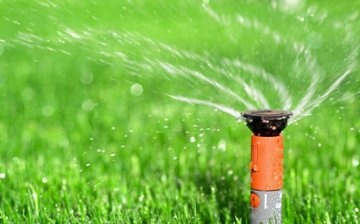

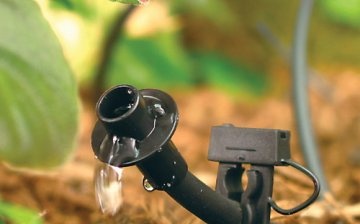
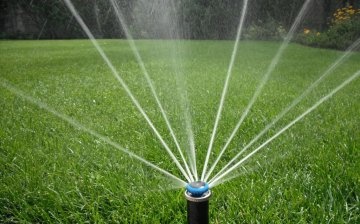
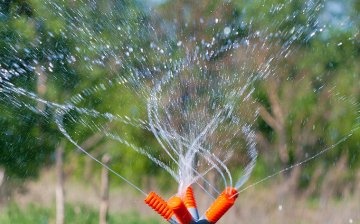
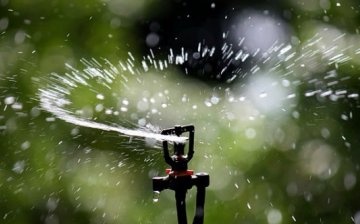






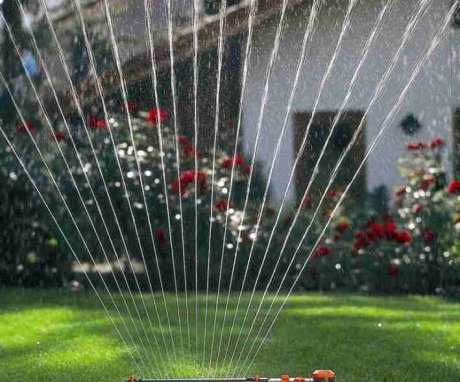
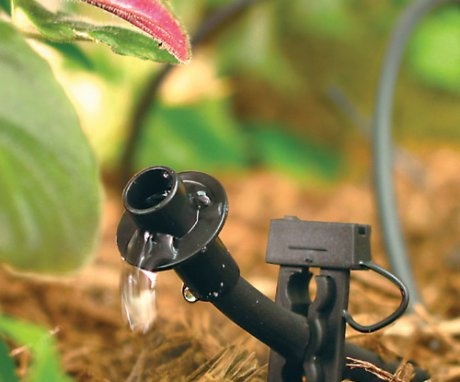
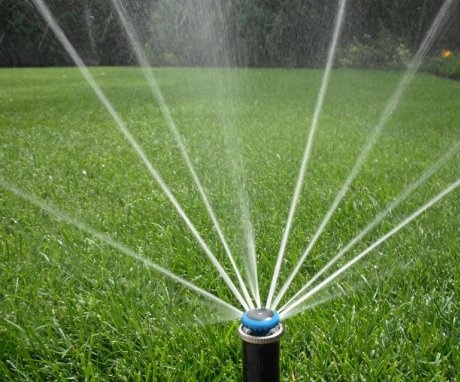

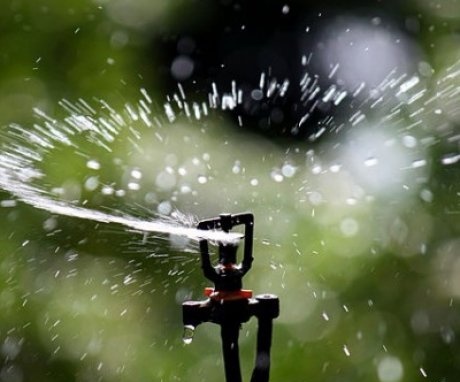
I agree that watering is good. After all, we have not had rain for a whole month now. This is just awful, so your watering instructions came to hand in time. Maybe someone knows, it's easier, something about watering. Write in the comment, read it. And I will take it into service.
The most profitable irrigation option is still drip irrigation. After all, water consumption is significantly reduced, and all trace elements can be added immediately. But to do it you need to spend time.